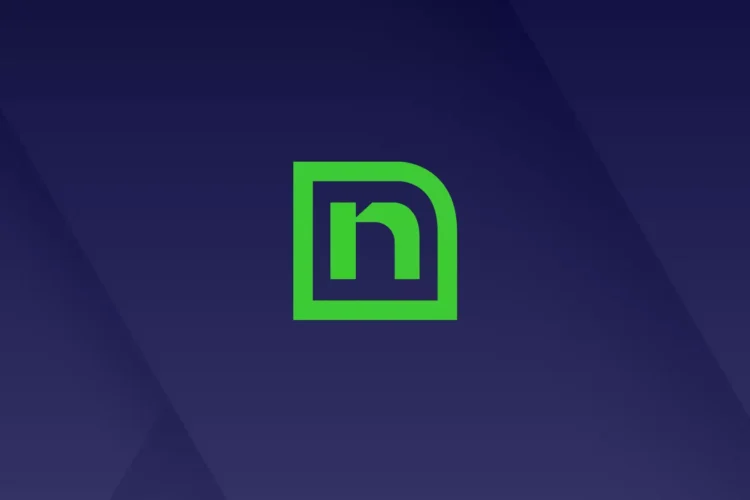Accounts Payable Automation
Rethink Accounts Payable with Intelligent Automation
Free up your team to focus on more strategic and value-added tasks that can significantly impact your organization’s efficiency and growth with intelligent automation. As your trusted partner, we help you solve your AP department’s top challenges so you can accomplish even more.
Achieve More With Fewer Resources
Transform the way your AP department manages its financial processes with advanced automation solutions. This technology can help you achieve remarkable increases in employee productivity, improve your processing costs, and save significant processing time per invoices, letting you focus on strategic tasks.

Transforming Accounts Payable with Automation
Intelligent automation is changing the way AP departments operate, offering a powerful solution to enhance efficiency, minimize errors, and save money. This technology also offers real-time visibility into AP operations and specialized tools for managers, giving AP professionals more control over the processes than ever.
Why AP Automation
Enhance Your AP Efficiency with Advanced Automation
By implementing AI-powered intelligent automation, you can quickly realize a variety of benefits that make your organization more secure, save you valuable time, and boost your productivity. Let us help you streamline your processes and unlock the full potential of your AP department, allowing you to focus on driving your business forward.
Save Time and Money
Reduce the time spent on manual invoice processing, allowing your team to focus on more valuable tasks and streamline workflows. Organizations can also achieve up to 90% cost savings per invoice, with labor costs dropping by 79%.
Special Tools for Managers
Provide managers with real-time dashboards and tools to monitor invoice status, address bottlenecks, and make informed decisions.
Improve Security
Enhance the security of your invoice processes by ensuring sensitive documents are handled securely and tracked accurately. Plus, AI can help with fraud prevention by identifying anomalies like duplicated invoices or suspicious vendor patterns.
Quick Return on Investment (ROI)
AI processes high invoice volumes without additional staffing, handling diverse formats, which accelerates ROI.
Customer Story
Clay Lacy Aviation Boosts Efficiency by Automating 95% of Invoices
Get the story of how Clay Lacy Aviation automated its accounts payable process, including automating 95% of its invoice processing, reducing its error rate from 10% to 0.2%, improving the customer experience, making more efficient use of staff’s time, and eliminating their reliance on paper.

How to Use It
Apply Intelligent Automation to Your Invoice Process
Discover how intelligent automation can transform your accounts payable processes, making them more efficient. From capturing invoices to routing them for approval, integrating with core systems, and providing real-time dashboards, AP automation offers a range of use cases that can revolutionize your workflow. Explore the various ways you can use this technology to enhance your AP operations.
Capabilities Include
- Invoice Capture & Data Extraction
- Automated Invoice Routing
- Electronic Approvals
- Integration with Core Systems
- Real-Time Dashboards & Reporting
- Customizable Business Rules
- Vendor Management
- Robotic Process Automation
Invoice Capture & Data Extraction
Automate the capture of invoices from various sources and extract relevant data to streamline your accounts payable process.
- Capture invoices from fax, mail, email, and EDI
- Extract data automatically, eliminating manual data entry
- Store invoices in a centralized system for easy access
- Reduce errors and improve data accuracy
Automated Invoice Routing
Ensure invoices are processed quickly and efficiently by automatically routing them to the appropriate business units or managers.
- Route invoices to the correct department or manager
- Set up rules for automatic routing based on invoice type or amount
- Track the status of invoices in real-time
- Reduce processing time and avoid bottlenecks
Electronic Approvals
Speed up the approval process by allowing managers to review and approve invoices electronically from any device. When invoices are prioritized, you can avoid missed opportunities for early pay discounts and positively impact vendor negotiations.
- Approve invoices from desktop or mobile devices
- Receive notifications for pending approvals
- Add comments or additional data during the approval process
- Complete approvals faster and with greater flexibility
Integration with Core Systems
Unlock the power of integration with your core systems, including your ERP
- Allow users to stay in your core systems like Workday, SAP, Microsoft Dynamics, Oracle, JD Edwards, etc.
- Compliment master data, improve productivity with intuitive search, and reduce manual data entry
- Accelerate processes with seamless connection
- Centralize content directly within industry-specific systems to drive further insights
Real-Time Dashboards & Reporting
Gain visibility into the status of invoice processing with real-time dashboards and reporting tools. AI can also enforce adherence to tax codes, TIN validation, and audit trails. This consistent data entry simplifies compliance reporting.
- Monitor invoice processing status in real-time
- Identify and address bottlenecks quickly
- Adjust workload distribution as needed
- AI generates spend analytics, supplier performance metrics, and cost optimization recommendations
Customizable Business Rules
Customize business rules within the AP automation software to fit your organization’s unique needs and adapt to changing business conditions.
- Set up rules for invoice approval and routing
- Make real-time changes to approval processes
- Ensure invoices are delivered to the correct people
- Adapt to business changes without involving IT
Vendor Management
Link vendor case management profiles and documents together in one place for enhanced visibility and control, making it easier to manage contracts, terms, and expiration dates.
- Manage vendor contracts, terms, and expiration dates in one place
- Allow personnel to interact with vendor-specific information, compliance documents, contract details, and correspondences
- Standardize vendor sourcing and improve decision-making
- Reduce risk through increased visibility and vendor governance and gain error-free processing and timely payments to foster supplier trust
Robotic Process Automation
Speed up invoice processing and compliance monitoring with RPA and AI. This intelligent automation technology minimizes manual data entry errors and automates reconciliation to match transactions in seconds.
- Bots complete repetitive tasks at rapid speed with capabilities like cross-checks, auto-alerts, site logins, etc.
- Finance | Review invoices, POs, and bills and perform ERP/CRM lookups
- Increase data accuracy and reduce reliance on manual data entry
- Effortlessly manage the receipt, approval and payment of invoices

Boost Your AP Efficiency with Intelligent Automation
Let our experts guide you toward the right AP automation solution to streamline your invoice processing, enhance security, and empower your team, giving you more time to focus on strategic tasks.
Customer Stories
Every Success Story Starts With a Vision
Our customers inspire us every day. It’s our privilege to help them achieve their goals and reimagine what’s possible.
Automating our accounts payable process has allowed us to maintain existing staffing levels as our fleet grows, supporting the company’s continued growth and scalability.
“Clay Lacy Aviation’s managed fleet has expanded from 50 to over 140 business jets nationwide. Automating our accounts payable process has allowed us to maintain existing staffing levels as our fleet grows, supporting the company’s continued growth and scalability.”

Avel Trinidad
Senior Manager of Accounting Business Operations, Clay Lacy Aviation
We like the integration between OnBase and our financial system. Now, they talk to each other.
“We like the integration between OnBase and our financial system. Now, they talk to each other, and everything is in one place, so you don’t have to go into different folders and applications to find invoices and relevant files. It’s all in Unity now, which is amazing.”

Tracy Engbloom
Director of Financial Information, Dairy Farmers of Wisconsin
Accounts payable has been transformed from a paper-pushing payment process to a flexible, time-saving solution.
“I love this solution. Accounts payable has been transformed from a paper-pushing payment process to a flexible, time-saving solution. We no longer spend time pushing physical paper through the process and filing that paper once we’re done with it.”
Director of Finance, Wis-Pak
See What Customers Are Saying

The time was right for us to implement OnBase in accounts payable, and I was very happy to see this vision finally come into reality because it has been a real benefit for the organization. Not only does our team love it, but most of the users are happy with it, too. And we‘re already talking about what we‘re going to do next using these tools.
Jessica Rogers-Heintz
Senior VP of Finance and Administration, Dairy Farmers of Wisconsin

Integrating workflow into our accounts payable operation allowed us to realize the full potential of an automated workflow solution that has proved to be nothing short of a game changer for Clay Lacy Aviation.
Brad Wright
Chief Financial Officer, Clay Lacy Aviation
Learn More About Accounts Payable Automation
Get insights on accounts payable automation and digital transformation.

- Customer Story
- Accounting & Finance, Enterprise Content Management (ECM)

- Whitepaper
- Accounting & Finance, Capture, Workflow Automation

- Webinar
- Accounting & Finance, Artificial Intelligence (AI), Intelligent Automation
Experience a More Efficient Accounts Payable Today
Talk with us today to learn how our solutions can streamline your processes, enhance accuracy, and solve complex challenges your department and broader organization face.
Fields marked with * are required